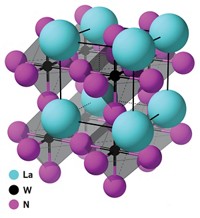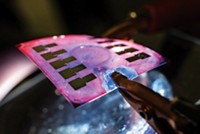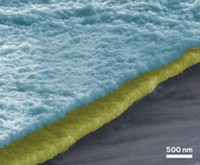Advertisement
Grab your lab coat. Let's get started
Welcome!
Welcome!
Create an account below to get 6 C&EN articles per month, receive newsletters and more - all free.
It seems this is your first time logging in online. Please enter the following information to continue.
As an ACS member you automatically get access to this site. All we need is few more details to create your reading experience.
Not you? Sign in with a different account.
Not you? Sign in with a different account.
ERROR 1
ERROR 1
ERROR 2
ERROR 2
ERROR 2
ERROR 2
ERROR 2
Password and Confirm password must match.
If you have an ACS member number, please enter it here so we can link this account to your membership. (optional)
ERROR 2
ACS values your privacy. By submitting your information, you are gaining access to C&EN and subscribing to our weekly newsletter. We use the information you provide to make your reading experience better, and we will never sell your data to third party members.
Energy
Titanium Dioxide Coating Stabilizes Photoanodes
Transparent layer lets in sunlight, promotes conduction, and prevents corrosion
by Elizabeth K. Wilson
June 2, 2014
| A version of this story appeared in
Volume 92, Issue 22
Semiconducting photoanodes used to oxidize water for solar fuel production are an unstable bunch. They’re prone to corrosion and can quickly become inert. A team led by Nathan S. Lewis of California Institute of Technology has shown that a thin coating of titanium oxide can act as a protective blanket to greatly improve the performance of these photoanodes (Science 2014, DOI: 10.1126/science.1251428). TiO2 is already well-known as a component of sunscreens, pigments, and photocatalysts. The Caltech group coated anodes with TiO2 films 4 to 143 nm thick via atomic layer deposition. The coatings, they found, have electronic defects that promote hole conduction, are transparent enough to let through sufficient amounts of sunlight, and prevent corrosion of the active catalyst. For example, the coating allowed a silicon photoanode to run continuously for more than 100 hours with little decrease in performance. The coating also improved the stability of gallium arsenide and gallium phosphide photoanodes. In addition, the researchers write, “the ability to engineer the energy levels and the distribution of defect states in chemically stable coatings such as TiO2 offers the opportunity to stabilize a host of narrow-band-gap semiconductors for use in oxidative photochemistry.”





Join the conversation
Contact the reporter
Submit a Letter to the Editor for publication
Engage with us on Twitter